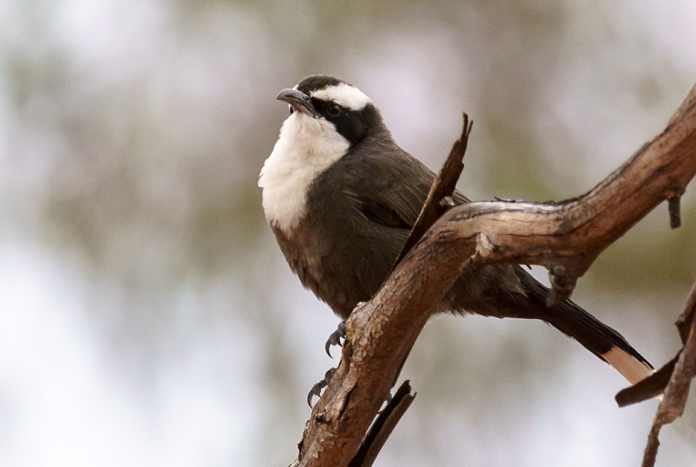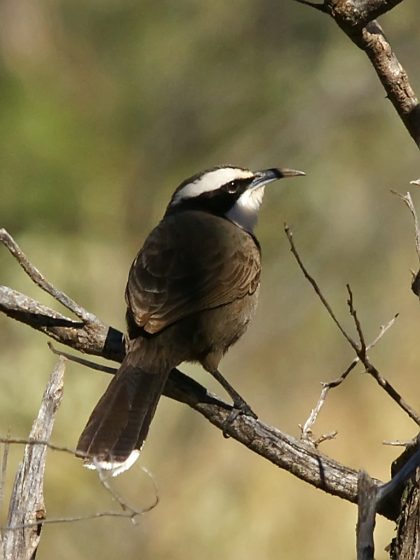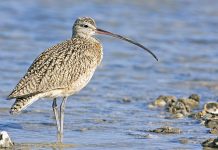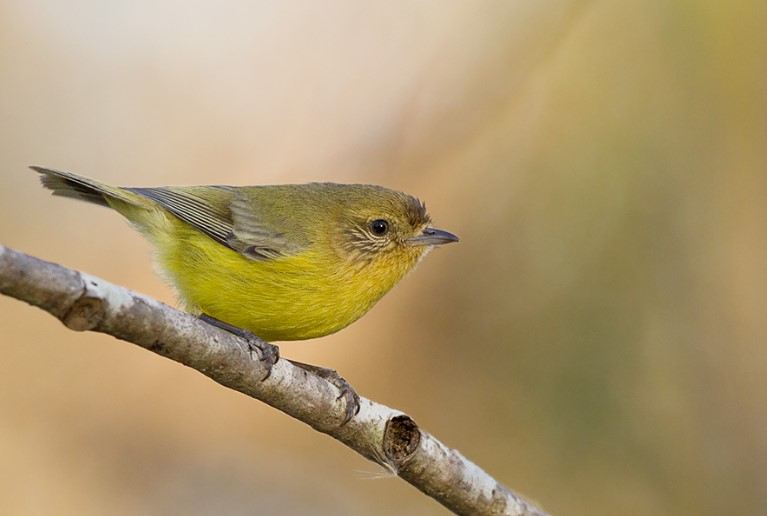Surprisingly Hall’s Babbler (Pomatostomus halli) was not discovered until 1963. In spite of its abundance and wide range in the mulga woodlands of central Queensland and northwestern New South Wales. Earlier observers had evidently confused it with the similar-looking, but noticeably paler, White-browed Babbler-for both species are closely related and have much the same habits, calls, and ecology.
Hall’s Babblers occasionally move about in pairs but more often form stable flocks of up to 20 birds. The area of their home range may be up to several hectares. Within it, a flock may feed in one pocket of shrubbery for up to half an hour. They forage mostly on the ground, bounding along and probing with their long, curved bills among the debris for insects, or turning over bark or stones, clucking softly all the while in contact. Birds also glean and probe on trunks and branches.
Read More – Eastern Spinebill (Acanthorhynchus tenuirostris)

Occasionally a bird carries a large prey item to an exposed branch where it shares it with others. A home range usually contains a clump of roosting nests, each attached securely to small branches just inside the foliage and three-seven meters above the ground. Before entering these dormitories at nightfall, flock members alternately perch close to each other near the nest, and chase each other.
The flock may divide between roost nests as well as change their roost on consecutive nights. In the morning, birds emerge silently and sit and preen themselves and each other before flying off to feed. Hall’s Babblers breed after substantial rain outside the breeding season. Only the female incubates; she is more often than not silent on the nest but gives a series of loud, staccato calls before joining the flock to forage. She may be fed and preened by others and accompanied back to the nest by attendants who chase intruders away.
Read More – Melodies of Nature: Captivating Song Thrush Sound That Will Enchant Your Soul
The size of Hall’s Babbler is about 210-220 mm. Both sexes are similar. Crown dark sooty brown bordered with a very broad white eyebrow. Upper parts dark sooty brown, blacker over rump; tail dusky black-tipped broadly white, tips narrow on central feathers. Face dusky; throat and upper breast white, sharply demarcated from dark brown lower breast, belly, flanks, and undertail. Normally the eyes are brown along with a bill de-curved, black, with a pale base to the lower mandible and black feet. Immature adults are a little duller.
The call of Hall’s Babbler is soft chattering year-round. The voice is soft, repeated clucks in contact; brisk whistles in alarm. The song of Hall’s Babbler is long-drawn, growling miaow as in White-browed Babbler.
The bird’s nesting and breeding seasons are mostly July-October. Normally the nest is a small but neat spherical dome of fine twigs, 220-300 mm wide, along with the side entrance. That is lined with finer material; placed in the outer Hall’s Babblers live in eastern mulga woodlands where they replace their closest relative, the White-browed Babbler foliaged branches of acacias, and 4-10 meters above the ground.
Normally this babbler laid one or two; creamy brown, eggs that are marked with fine dark brown hair-lines, more at the larger end; oval, about 19 x 25 mm. Incubation by females.
The distribution of Hall’s Babbler is dry acacia-covered ridges and plains in central-eastern Australia, from at least Boulia-Winton, Queensland, in the north, south to near the Barrier Range, NSW, and east to Charleville and Blackall, Queensland.
Read More – Red-headed Woodpecker Call







